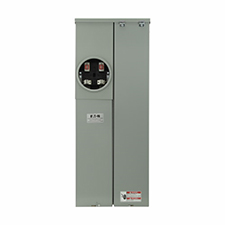
How to Plan for a Solar-Ready Future Before Breaking Ground
Chuck Ross
The state of California made news in 2018 when it passed the nation’s first mandate that most new homes under three stories had to incorporate rooftop solar photovoltaic (PV) panels, beginning in 2020. It remains the only state with this requirement, but a number of state and smaller municipal jurisdictions including St. Louis, Mo., Orlando, Fla., and Tucson, Ariz. have passed requirements that new homes be built to be “solar-ready.” This might seem like a complicated – and expensive – regulation to address, but it really only requires a bit of extra planning and preinstalling some of the equipment needed to make it easier to add solar equipment down the road.
Every jurisdiction will have its own demands when it comes to what’s needed for an installed PV system to pass inspection. This means a contractor’s first stop should always be a visit with the local building department to understand what version of the National Electrical Code (NEC) is currently referenced and what other local regulations might be in force. In general, though, keeping the following four tips in mind should address most issues contractors will encounter:
Every jurisdiction will have its own demands when it comes to what’s needed for an installed PV system to pass inspection. This means a contractor’s first stop should always be a visit with the local building department to understand what version of the National Electrical Code (NEC) is currently referenced and what other local regulations might be in force. In general, though, keeping the following four tips in mind should address most issues contractors will encounter:
- Plan a panel-friendly roof. First, you need to understand how much space would be required for the number of panels necessary to support the home’s electrical load. Ensure roof plans provide enough unshaded, unobstructed space for the panels and that structural systems can support the weight. Southern exposures offer the greatest solar potential.
- Get conduit in place. Installing required conduit to provide an easy pathway for future wiring during home construction can address a major potential pain point for homeowners and their solar installers.
- Reserve panel-adjacent wall space. Solar projects require inverters and other equipment that are most easily installed next to a home’s main panel. Leaving room nearby for possible storage batteries will make adding this backup-power resource easier, as well.
- Make sure the panel is up to the job. Depending on the size of the future solar system, a standard 200A box might not offer the capacity needed to meet code requirements. Solar-ready power centers are engineered with ratings high enough to support the added amperage the panels will create. This could save enormous headaches for homeowners. These panels also feature all code-required permanent markings identifying solar operations. Some models also incorporate utility meter housings for an all-in-one installation.
Photo courtesy of Eaton



